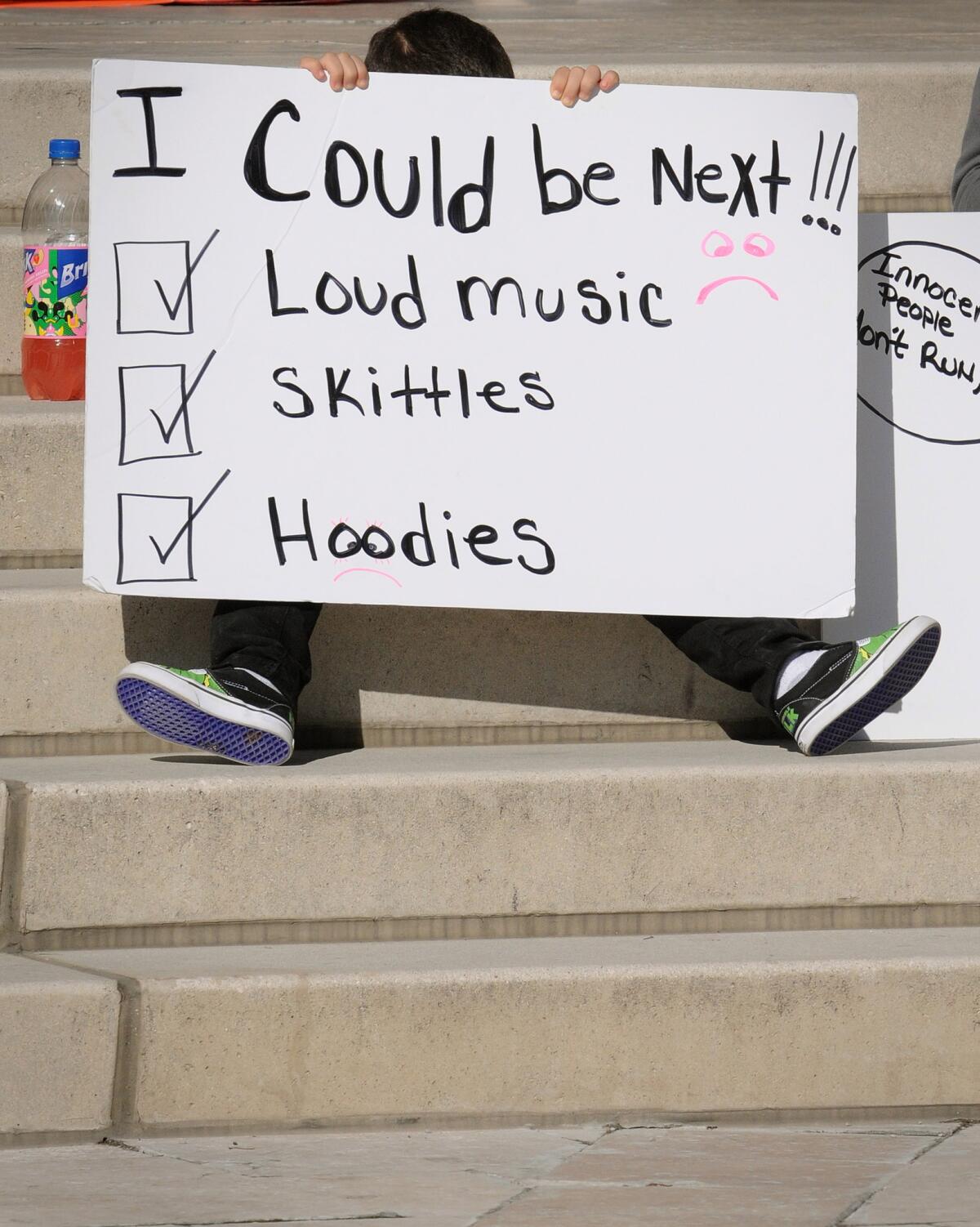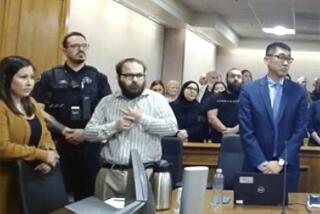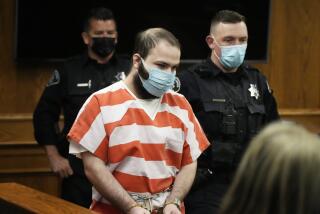What did Michael Dunn ‘loud music’ jurors believe? Fact vs. myth

What should have been an easy pit stop for two separate cars over the Thanksgiving Day holiday in 2012 has turned into the latest national debate over race, guns and whether self-defense laws protect anyone or are just licenses to kill. That debate was heightened Monday when the first juror in the Michael Dunn murder case came forward to explain some of the problems with which they wrestled.
Here are some of the myths and facts that have come to surround the case.
What happened that night?
It was Nov. 23, 2012, when Dunn and his fiancee, Rhonda Rouer, pulled into a gas station in Jacksonville, Fla., and parked next to a red Dodge Durango with four teenagers inside, including Jordan Davis. The African American teenagers had stopped for gum and cigarettes. Dunn had just left his son’s wedding, and Rouer went into the store to buy wine and chips. Dunn complained about the SUV’s loud music and it was turned down. But then volume was raised again. Dunn said he repeated his request to quiet the music, but that was rejected.
Dunn testified that he was threatened and saw 4 inches of what he thought was a shotgun in the car, though no weapon was found. It was after this perceived threat that Dunn reached into the glove compartment of his car, pulled out a legal 9-millimeter handgun and fired 10 shots in volleys at the car that was driving off. Three bullets hit and killed Davis. Six others hit the car and one shot missed. Dunn argued that he acted in self-defense.
What did the jurors believe?
“I believed he was guilty,” one juror, Valerie, said in an interview with ABC’s “Nightline” on Wednesday. The jurors were not identified during the trial, and Valerie was known as Juror No. 4. She asked that her full name not be given to protect her identity.
The jury was hung on the charge of first-degree murder, but it had rejected the self-defense claim, she said. The initial vote was 10-2 to convict on first-degree murder. After about 30 hours of deliberation over four days, the vote stood at 9-3 for conviction, she said. At that point, the jury said it could not reach a verdict on that count and the judge declared a mistrial. The jury did convict on three counts of second-degree attempted murder for the shots fired at the other teens and one count of firing into the car.
Valerie said all the jurors felt Dunn crossed a line when he continued to fire at the SUV as it fled the scene. Any threat Dunn may have felt before had passed but the software engineer kept firing. “We all believed that there was another way out, another option,” Valerie said. “Roll your window up, ignore the taunting, put your car in reverse ... move a parking spot over. That’s my feeling,” she said in the interview.
Myth #1: Was the trial really about loud music?
No, and Dunn acknowledged as much in a telephone conversation recorded by authorities. Dunn and his father, Phillip, were discussing the case.
“Well, it’s gone viral,” Phillip Dunn said.
“In a good way or a bad way?” Michael Dunn asked.
“A bad way,” his father said. “Shoots black kid over ... loud music.”
“I made it very clear to the police,” Dunn said.
“Yeah, that it had nothing to do with it. We know what’s going on,” Phillip Dunn said.
Most people have had the experience of having their personal space invaded by unwanted noises. But this case immediately rubbed the racial nerves raw. Dunn has referred to the music as “rap crap” and “thug” music. In nine telephone recordings made while Dunn was in a Florida jail awaiting trial, he explained his justification.
“Like, I’m the ---victim here,” Dunn said. “I was the one who was victimized.”
“I mean, I don’t know how else to put it,” Dunn continued. “They attacked me. I’m the victim. I’m the victor, but I was the victim too.”
Dunn made no secret of what he thought of the black teens.
“When the police said that these guys didn’t have a record, I was like, you know, I wonder if they’re just flying under the radar,” he told his fiancee by telephone. “Because they were bad.”
Myth #2: There is something special in Florida’s ‘stand your ground’ law that makes this type of incident possible.
Neither this case, nor the other one mentioned in the same breath -- that of George Zimmerman shooting and killing an unarmed black teenager, Trayvon Martin -- are “stand your ground” cases. The defense in both trials was self-defense, in which the defendant argued that he felt threatened and responded.
All “stand your ground” cases are self-defense cases but not all self-defense cases are “stand your ground” cases.
Under Florida law, a person has a right to use deadly force if he is acting in a lawful manner and if he has a reasonable fear of being in danger of death or great bodily harm. Under the state’s “stand your ground” law, a defendant can seek a special hearing where a judge can declare the defendant immune from prosecution. No special hearing was sought by either Zimmerman or Dunn.
Myth #3: The Dunn case was just like Zimmerman’s.
No. Zimmerman was injured and had the wounds to show for it – even though the circumstances of his confrontation with Martin were in dispute during the trial. Dunn had no wounds, felt endangered and continued to fire even as the vehicle was fleeing. Furthermore, Zimmerman stayed at the scene, met with police and gave statements. Dunn drove off with his fiancee, ordered pizza and drank alcohol in a hotel room and walked his dog. He testified that he did not learn of the death of Davis until the next morning and then called a friend at home, about 175 miles away, to discuss how to surrender.
Myth #4: Dunn got away with murder because he is white and the victim was black.
This myth is based on the following thought experiment, pushed by some on Twitter and other social media. If Dunn were black and he had fired 10 times at a car of white teenagers playing loud music (say, early Pat Boone), would the jury have failed to reach a verdict? Different people have different answers, but for Dunn, this case isn’t over yet. When Dunn, 47, is sentenced, he will get 60 years behind bars and perhaps as many as 75 – the equivalent of life in prison. That is the same sentence he would have received if convicted on the top charge.
Further, Florida prosecutors have already indicated that they expected to retry Dunn on the first-degree murder charge.
ALSO:
Soldier convicted in rape, murder of Iraqi girl is found hanged
Graphic cow abuse video released as Idaho advances ‘ag-gag’ bill
Energy Department probes radioactive leak at New Mexico nuclear dump
Follow LATimes National on Facebook
More to Read
Sign up for Essential California
The most important California stories and recommendations in your inbox every morning.
You may occasionally receive promotional content from the Los Angeles Times.











